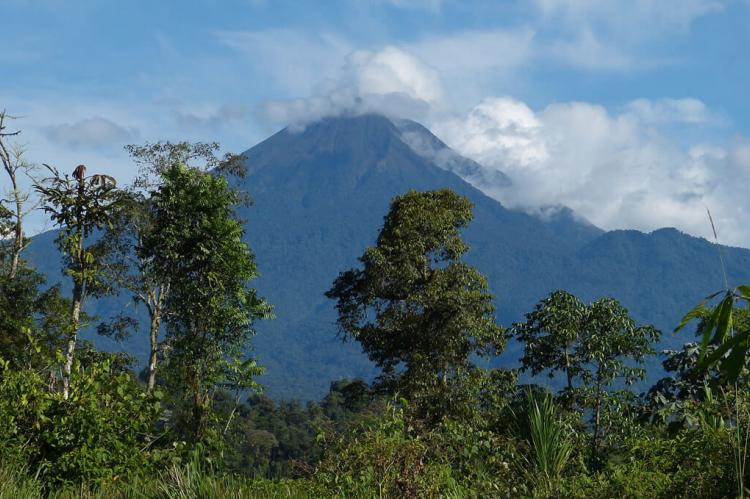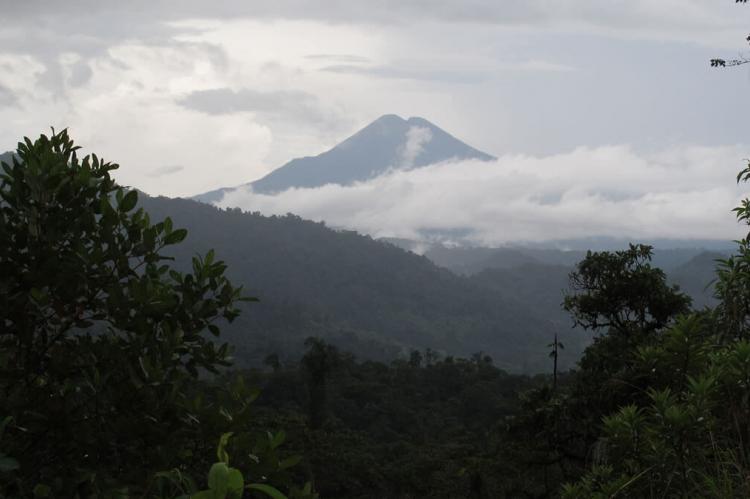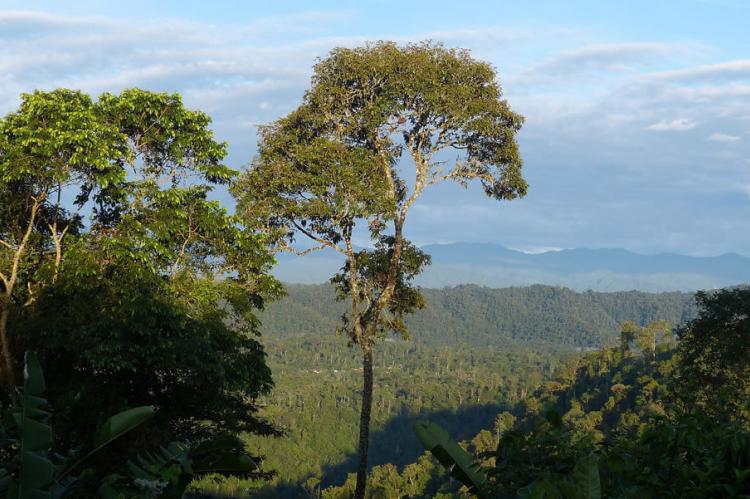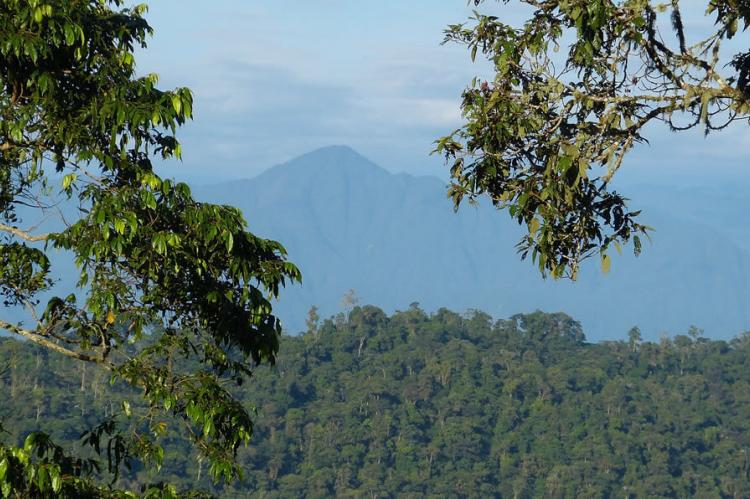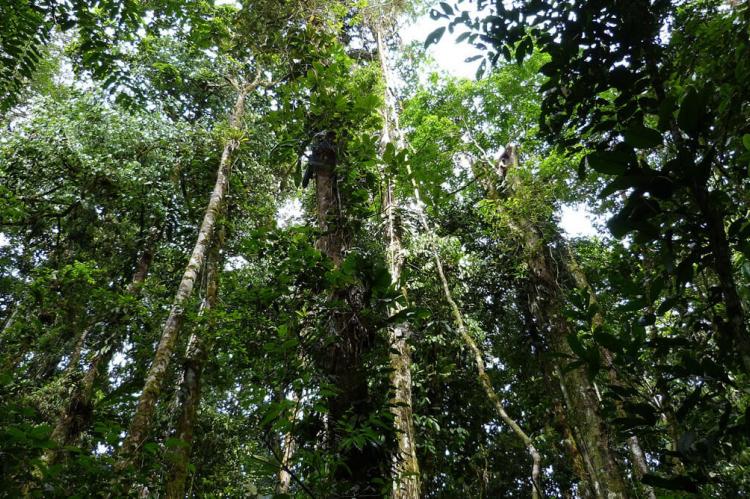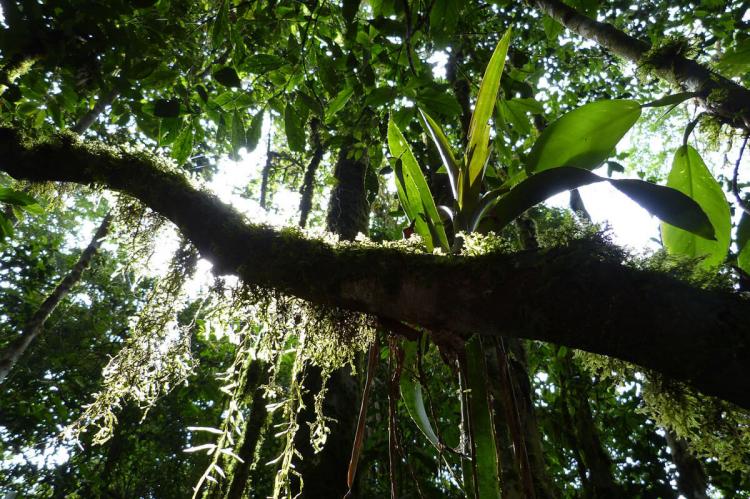Sumaco Napo-Galeras National Park and Sumaco Biosphere Reserve (Ecuador)
Sumaco Napo-Galeras National Park is a protected area and Biosphere Reserve in northeastern Ecuador. It is situated in the provinces of Napo, Orellana, and Sucumbíos in two sectors: the Sumaco volcano and its adjacent areas and the Cordillera de Galeras.
Sumaco Napo-Galeras National Park
The Sumaco Napo-Galeras National Park is a protected area in northeastern Ecuador, approximately 100 km (62 mi) southeast of Quito.
The National Park is situated in the provinces of Napo and Orellana in two sectors: the area of the Sumaco volcano and its adjacent areas (190,562 ha or 470,889 acres) and the Cordillera de Galeras (14,687 ha or 36,292 acres).
It includes the Sumaco and Pan de Azúcar volcanoes and the Black and Galeras hills. It comprises two mountain systems isolated from the Andes: the Sumaco volcano massif and the Galeras mountain range.
The National Park's highest point is the Sumaco Volcano rising to (3,900 m or 12,795 ft) above sea level. It is a relatively isolated peak lying east of the central Andean Mountain Range. The lowest altitude is 300 m (984 ft).
The area conserves the high basins of several Amazonian tributaries of the Quijos, Coca and Napo. In addition, the site has numerous watercourses, such as the Suno, Coca, Pitayacu, and Pusuno Rivers.
Flora and Fauna
Some 280 bird species are found in the National Park, but the number is probably much higher because the park is little explored. Notable birds include Dysithamnus occidentalis, Touit stictoptera, Ara militaris, and Galbula pastazae.
A mammal survey conducted at about 2,500 m (820 ft) altitude on the eastern slope of Sumaco revealed 17 species, including eight bats. Larger mammals include Panthera onca, Tremarctos ornatus, Myrmecophaga tridactyla, Tapirus pinchaque, and Puma concolor.
Little information exists on other groups, but the diversity of amphibians and reptiles is assumed to be exceptionally high.Several amphibians are only known to be found in this area, including toad Osornophryne sumacoensis, which has only been found on the eastern slope. Similarly, Pristimantis ernesti has only been found on the summit of Sumaco.
In 2010, UNESCO declared the National Park a Biosphere Reserve.
Sumaco Biosphere Reserve
The Sumaco Biosphere Reserve covers many ecosystems, from the tropical highlands-Andean paramour to the tropical Amazon plains.
The primary vegetation type is a moist, broadleaf forest with abundant palms. The area includes well-preserved corridors of habitats from the lowlands to above the tree line.
There is a highly diverse fauna. Mammals include spectacled bears (Tremarctos ornatus), jaguars (Panthera onca), and several species of bats. Birds include torrent duck (Merganetta armata) and Andean cock-of-the-rock (Rupicola peruviana).
About 100,000 people are living in the area, including indigenous communities. The main economic activities are coffee plantations, agriculture, fisheries, the production of naranjilla (a unique fruit from the Andes), agroforestry, and tourism.
